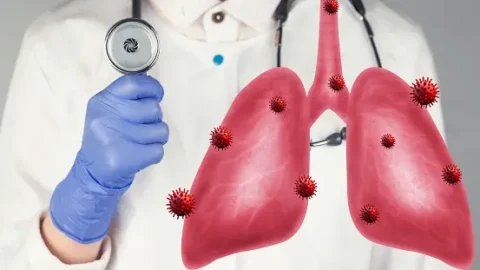Bandaids are a cornerstone of wound care, providing a barrier against infection and promoting the healing process. Whether in professional healthcare settings or home first aid kits, these small strips of material play a crucial role in our daily lives. What if the same bandaids harbored hidden dangers?
Are you one of those people who prefer to rip out a new band aid every time someone in your home gets a small nick or cut? Well, brace yourself, for this might shock you.
A recent study has found proof of adhesive bandages containing PFAS chemicals, which are both a health and an environmental hazard. If you are aware of the AFFF lawsuit, then you might already know how harmful PFAS is. The Guardian notes that besides bandaids, other personal care items like flosses and toilet paper might also contain these toxic chemicals.
Join us as we explore this dangerous possibility closely today.
Why Are Band-Aids Important in Healthcare?
Band-aids – the trusty little helpers in the world of first aid – are the unsung heroes of wound care. Imagine them as tiny knights, bravely shielding cuts and scrapes from the menacing threats of dirt and bacteria. They don’t just sit there; they actively create a safe haven for healing to work its magic.
Take adhesive bandages, for example—the famous “band-aids.” They’re like the superheroes of quick fixes. These handy strips stick on effortlessly, covering up those pesky little cuts and blisters. Their secret? A sticky back that holds on tight, keeping everything snug and secure. It seems like they’ve got a magic touch that says, “I’ve got you covered!”
And let’s talk about their healing prowess. Adhesive band-aids aren’t just about looks. They’re masters at maintaining just the right amount of moisture for a speedy recovery. So, while they’re busy looking cute with their cartoon characters or sleek designs, they’re also quietly ensuring your skin bounces back without a fuss.
These band-aids also offer the ultimate convenience. Whether you’re at home, on a hike, or even in a bustling hospital, they’re ready to leap into action. Just peel, stick, and voila! Instant protection. They’re your first aid squad, always on standby for unexpected bumps and scrapes.
How Do PFAS Chemicals Make Their Way Into Band-Aids?
Band-aids are undoubtedly sacred to healthcare. But the painful truth is, they’re not as safe as you were led to believe so far.
In a consumer study conducted by Mamavation, 40 band-aids manufactured by 18 different brands were sent to get tested in an EPA-certified laboratory.
The goal of the test was to determine if they contained the forever PFAS chemicals. The results were outrageous. 65% of the band-aids tested positive for organic fluorine.
Linda Birnbaum, the former director of the National Institute of the Environmental Health Sciences (NIEHS) further highlighted the extent of the threat. Birnbaum explained how these bandaids, when applied to open wounds, also put people at risk of direct PFAS exposure.
The real question here is: how did the toxic PFAS chemicals manage to sully them with their risks?
It turns out, PFAS chemicals are often used in the manufacturing process of band-aids to impart certain properties like water resistance and durability. These chemicals can be found in adhesives, backings, and even in the fibers themselves. They create a shield that’s not just against water, but also against wear and tear.
Picture this: as band-aid manufacturers seek to improve their products’ performance, PFAS chemicals sneak into the equation. They’re like invisible reinforcements, making bandaids more effective at their job but also introducing potential risks that weren’t initially apparent.
Other PFAS-containing Products
We’ve already mentioned above that PFAS chemicals are toxic – but did you know they are also possibly carcinogenic? On top of that, they can even worsen the state of existing cancer patients.
A 2023 Yale study revealed this truth. It found that these chemicals, upon entering our bodies, could promote cancer cell migration. This means that exposure to these chemicals can lead to metastasis in cancer patients.
In light of these disturbing revelations, we must recognize and eliminate all sources of PFAS chemicals in our day-to-day lives. Mentioned below are other everyday products we’re surrounded by that contain these chemicals. Take a look:
AFFF Firefighting Foam
TorHoerman Law notes that Aqueous Film Forming Foam (AFFF) is most effective for extinguishing and containing fire caused by flammable gases and liquids. However, this firefighting foam also contains PFAS chemicals, which contribute to environmental pollution alongside impacting the firefighters’ health negatively.
In recent years, many firefighters who suffered serious health conditions following continued exposure to the foam filed an AFFF lawsuit against its manufacturers. Their claim was the negligence of the manufacturers in warning consumers of the foam’s ill effects, for which they sought a justified compensation.
Non-stick Cookware
Picture your favorite frying pan—smooth, shiny, and effortlessly releasing eggs without a hint of sticking.
That magic lies in the non-stick coating, often achieved with the help of PFAS chemicals. These chemicals, like skilled sorcerers of convenience, impart the ability to repel oil and prevent food from clinging to the surface.
The threat of PFAS chemicals in cookware runs deeper. When non-stick cookware heats up, these chemicals can possibly be released into the air and even into the food we prepare.
While the non-stick cookware industry was revolutionized by the Teflon brand, today, many other non-stick brands also use PFAS chemicals. In fact, beyond cookware, these persistent chemicals are also present in rainwear, furniture, outdoor equipment, and cosmetics.
Frequently Asked Questions (FAQs)
What are the common sources of PFAS contamination in my home?
As far as your home is concerned, the most common PFAS contamination sources are potentially in your kitchen and your wardrobe. We’re talking about non-stick cookware and water-resistant clothes here. Beyond these, your carpets, furniture, and even the paints covering your wall could contain these chemicals.
Should I stop using band-aids to protect myself from the threat of PFAS chemicals?
That’s a good idea, but not very feasible. A more convenient solution is to use band-aids from brands that have tested negative for PFAS presence. These include FEBU, All Terrain, TRU COLOR, Trutone, and Welly Good Vibes. Some of these are even eco-friendly; we strongly recommend you use them.
Can my makeup expose me to the risk of PFAS chemicals?
Yes, it can. PFAS chemicals are used in cosmetics to help them make your skin appear shiny after application. Some cosmetic products that are known to contain these chemicals include foundations, eyeliners, eyeshadows, nail paints, lipsticks and lip balms, and waterproof mascara.
In a world where the threat of PFAS exposure greets us afresh every day, it’s not easy to keep yourself safe. However, the only way forward is to keep making informed decisions to shield yourself from the forever chemicals as best as you can.

Daniel J. Morgan is the founder of Invidiata Magazine, a premier publication showcasing luxury living, arts, and culture. With a passion for excellence, Daniel has established the magazine as a beacon of sophistication and refinement, captivating discerning audiences worldwide.





